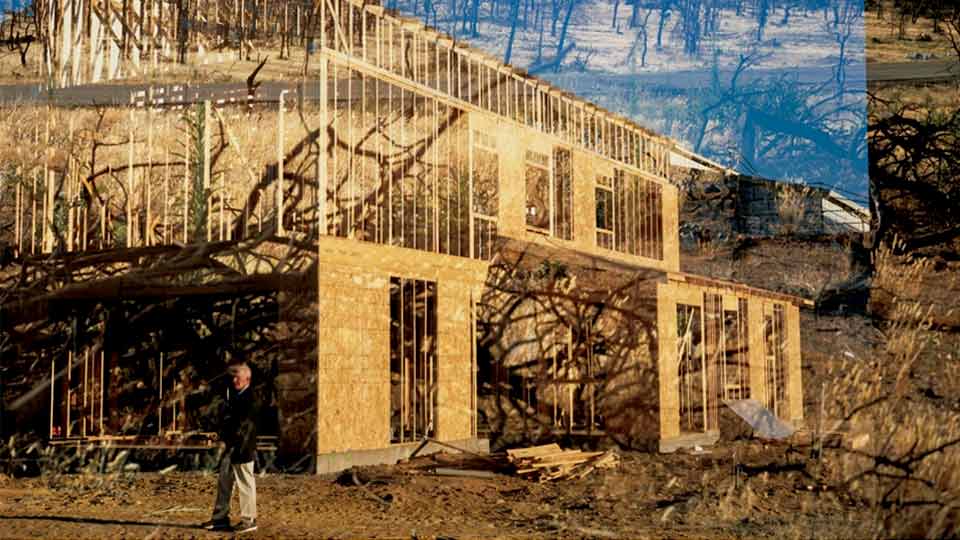Burn. Rebuild. Burn. Mother Jones Probes This Insanity
If you ever wondered how, or why people build and live in high risk wildfire zones, then you'll love this article from Mother Jones. It's about a 20 minute read that left me shaking my head. Here are the first few paragraphs:
"Burn. Build. Repeat: Why Our Wildfire Policy Is So Deadly
Standing on Shingletown Ridge and gazing west toward the setting sun, Bruce Miller eyes a rainbow of colors. He sees pink: the dusky sky blanketing a postcard-perfect valley 3,000 feet below. He sees gray: distant snow-capped mountains. He sees brown: century-old pine and oak trunks towering more than 100 feet above him. And he sees green: the profit he hopes to make by turning this 274-acre patch of forest into a subdivision for buyers looking for jaw-dropping views.
'This would be your high-dollar lot here,' the hearty 68-year-old tells me, halting our hike through a tangle of manzanita and poison oak to unfurl a map and point out the boundaries of a future home site. A sheer drop at the property’s rear reveals a stunning panorama. It also invites flames. 'Fire,' Miller says, 'burns uphill.'
Wildfire’s lethal tendency to surge up slopes was driven home last summer, when an inferno called the Carr Fire ripped through Shasta County, a chunk of Northern California pocked by crests and canyons as gorgeous as they are combustible. Lit by a spark from the wheel rim of a flat tire scraping the ground, the fire raged for 39 days, destroying more than 1,000 homes, killing eight people, and requiring some 3,500 firefighters from around the world and more than a dozen planes dropping chemicals to finally quell it. In November came the Camp Fire, which incinerated the nearby town of Paradise, killing 85 people. Together, the fires caused at least $18 billion in damage; bankrupted California’s largest utility, Pacific Gas and Electric; and forced the liquidation of at least one insurer. For weeks, Northern Californians breathed smoky air.
The destruction ended any delusion that humans could keep Mother Nature in check. They were harbingers of a new kind of megafire being unleashed on a warming world.
In February, at California Gov. Gavin Newsom’s direction, state fire officials listed 35 spots at particularly severe risk—spots where crews would race to cut down trees, in part to create wider evacuation paths. 'Climate change is acting as a force-multiplier that will increasingly exacerbate wildland fire issues over the coming decades,' the report concluded. It named as the state’s top priority for tree-thinning the stretch of highway that runs along Miller’s property, an area so overgrown that local fire officials call it 'the brush belt.'
Just three weeks later, Shasta County’s planning commission unanimously endorsed Miller’s plan to build houses on that land. The commission had let him subdivide the property several years earlier, but he hadn’t found a developer who wanted to buy the property, and his development window was set to close this year. So last December, about four months after the Carr Fire, he applied for an extension. This March, the commission gave him another three years. Since 2016, when the commission had blessed Miller’s initial development proposal, there had been 'no new information of substantial importance' about the advisability of developing the property, according to a document accompanying the commission’s decision. The document didn’t mention the Carr Fire. Nor did it cite the recent state report identifying the stretch of road along Miller’s acreage as the most urgent spot for fire-risk mitigation in all of California."
The entire article can be found in the link below.


